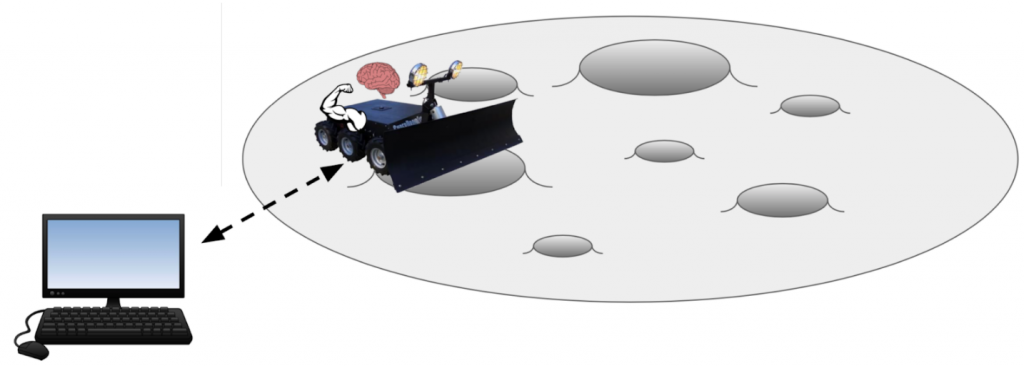Problem Description
Rapid space developments within the next decade target resource extraction and future scientific outposts. However, lunar terrain is cratered, unstructured, rocky, and unforgiving. With the promising growth in usage of autonomous worksystems on Earth, they have become an essential part of current and future plans to make lunar bases and resource infrastructure, such as landing pads, roads, or foundations. Although earth priors exist for terrestrial construction, they require massive energetics and mass, both of which are limited on the lunar surface. We target the extension from earth-based priors by developing surface grading/smoothing autonomy and controls for geotechnical preparations. Testing and validating in lunar-like environments using lunar simulant.
Use Case

A lunar construction entity/user selects a worksite region for CraterGrader to operate.
Upon CraterGrader arrival at the worksite, the user sends a signal to begin autonomous operations.
No user intervention is needed, though an operations terminal gives the user the ability to activate a remote emergency stop and monitor reported progress by CraterGrader.
First, CraterGrader detects immediate surrounding craters and terrain topography.
Next, CraterGrader navigates through the worksite, mapping the worksite as it drives using onboard sensors and computing.
Once mapping is complete, CraterGrader plans joint trajectories for locomotion and tooling to fill and level each crater in the worksite.
Throughout operations, CraterGrader measures the terrain and reports updated maps and terrain manipulation performance to the user.
After all craters have been individually filled and leveled, CraterGrader navigates throughout the entire worksite, manipulating terrain as necessary, to also ensure desired specifications for site-wide grade and surface roughness.
Upon site-wide completion, CraterGrader reports a final worksite map and metrics to the user for final inspection and validation.